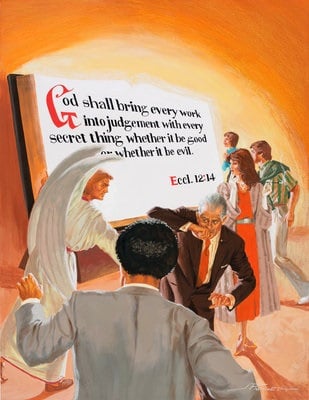Join the Hit the Mark panel as they discuss Sabbath School Lesson 10 – Upon Whom the Ends Have Come. It’s the fastest hour of the week!
Sign up for our weekly keyword handouts here: https://handout.sabbathschoolcoaching.com/hitthemark
 (0)
(0)Source: https://ssnet.org/blog/upon-whom-the-ends-have-come-hit-the-mark-sabbath-school/







 Lesson 10: Upon Whom the Ends Have Come
Lesson 10: Upon Whom the Ends Have Come 10.4 The Judge of All the Earth
10.4 The Judge of All the Earth A Spiritual Portrait of the Righteous Judge in Light of Modern Questions
A Spiritual Portrait of the Righteous Judge in Light of Modern Questions Introduction
Introduction
 Observation:
Observation: Principle:
Principle: Question 1: What do we learn from these verses about God’s nature and how He deals with evil?
Question 1: What do we learn from these verses about God’s nature and how He deals with evil?
 Conclusion
Conclusion Thought of the Day
Thought of the Day Illustration –
Illustration –  June 4, 2025
June 4, 2025 DAILY BIBLE READING
DAILY BIBLE READING Genesis 49 – Blessed with Open Eyes – Jacob’s Final View
Genesis 49 – Blessed with Open Eyes – Jacob’s Final View God’s Plans Through Imperfect People – And What That Means for You
God’s Plans Through Imperfect People – And What That Means for You Bible Text – Genesis 49 (KJV)
Bible Text – Genesis 49 (KJV) Introduction
Introduction Commentary
Commentary Lesson: Sin has consequences, even for future generations. But God still weaves His plan through broken stories (e.g., Levi becomes the priestly tribe).
Lesson: Sin has consequences, even for future generations. But God still weaves His plan through broken stories (e.g., Levi becomes the priestly tribe). Summary
Summary Message for Today
Message for Today ~~~~~
~~~~~
 June 1 – 7, 2025
June 1 – 7, 2025 June 4, 2025 | Fruit Reveals Heart | HEART ANCHOR
June 4, 2025 | Fruit Reveals Heart | HEART ANCHOR What you live springs from what lives within you
What you live springs from what lives within you Luke 6:44
Luke 6:44 Introduction
Introduction Story: Paul & the “School Influencer”
Story: Paul & the “School Influencer” Questions for Reflection
Questions for Reflection Prayer
Prayer
